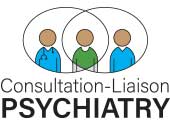Pediatric consultation-liaison (C-L) psychiatry is a well-established subspecialty that seeks to understand, assess, and treat emotional and behavioral distress in medically ill children and adolescents. The pediatric C-L psychiatrist provides expertise in medical and pharmacological principles, child and adolescent development, and presentations of abnormal psychological and behavioral responses in the pediatric patient. When assessing patients, it is crucial for the pediatric C-L psychiatrist to consider the family’s values, beliefs, and functioning while advocating for the patient.
Liaison work, including psychoeducation, participation in multidisciplinary treatment teams, and partnering with outside agencies as appropriate, can be particularly important when working with children with medical illnesses and emotional, behavioral, or cognitive problems. The pediatric C-L psychiatrists’ circle of care can also extend beyond the patient; sometimes they are asked to alleviate the distress and anxiety of parents, siblings, and even the medical team.
The following case illustrates the complex and multidimensional nature of pediatric C-L psychiatry.
Case Study
DB is a 15-year-old ninth grader with severe aplastic anemia (SAA)—a rare and serious condition in which the bone marrow stops producing blood cell lines (causing fatigue, infections, and uncontrolled bleeding)—who was admitted to the hospital for immune suppression therapy. He was referred for psychiatric evaluation after the primary treatment team observed symptoms of anxiety prior to procedures and treatments, episodes of irritability and anger leading to conflicts with others, and insomnia.
DB, otherwise healthy, was diagnosed with SAA approximately one month earlier after a visit to the emergency department for two months of recurring nose bleeds and easy bruising. Initially he and his family were told he had leukemia; however, after a bone marrow biopsy and additional testing over the next week, he was diagnosed with SAA.
DB has a history of depression and anxiety. He was treated with the selective serotonin reuptake inhibitor (SSRI) escitalopram and psychotherapy, but after two years, he stopped all treatments. Eventually he began “treating” symptoms of anxiety with marijuana, which he smoked several times a week.
When DB was age 7, he and his three siblings were placed with their maternal grandmother and her husband by the foster care system. They were removed from his biological mother’s care for neglect because of her chronic substance abuse. Since then, DB has lived in a stable and nurturing environment, where he attends school regularly, has friends, and enjoys basketball and boxing; however, he had to stop both activities abruptly once he was diagnosed with SAA.
After thorough assessment, the pediatric C-L service diagnosed DB with generalized anxiety disorder and adjustment disorder. When assessing DB’s mood and anxiety levels, the team considered the potential effects of the immune suppression therapy for his SAA, as well as the abrupt discontinuation of marijuana when he was admitted.
Given DB’s severe low blood-cell counts, the team decided against restarting an SSRI (SSRIs are associated with an increased risk for platelet dysfunction and low platelet counts, or thrombocytopenia). Instead, they prescribed a low dose of the benzodiazepine lorazepam, which significantly improved DB’s anxiety and insomnia symptoms. In addition, the team provided bedside cognitive-behavioral therapy (CBT) to treat his pre-procedure anxiety and address the longer-term goal of marijuana cessation.
Importantly, the pediatric C-L service established rapport with DB using supportive psychotherapy, sometimes while working on a puzzle or playing video games together. This eventually led to more detailed and insightful conversations, during which DB shared his fears about his illness and whether he would die from it, his anxiety about having been told for one week that he had cancer, and his sadness and anger about not being able to play sports or box anymore. A trusting relationship ensued.
Using psychoeducation, the treatment team and DB’s grandmother were taught how to identify, understand, and manage DB’s anxiety, which typically manifested as irritability and “treatment refusal.” The pediatric C-L service also provided emotional support to DB’s grandmother, who was clearly overwhelmed.
Once discharged, DB re-engaged in CBT with his outside therapist, and the pediatric C-L service continued to follow up with DB monthly in the outpatient setting. He continued to improve over time, becoming well-adjusted to his clinic visits and subsequent hospitalizations. Lorazepam was eventually used only prior to certain procedures, such as a bone marrow biopsy.
Pediatric C-L psychiatrists are integral members of the medical treatment team, providing invaluable psychiatric expertise during the medical care of children and adolescents in a developmentally sensitive manner. They must be particularly flexible and astute as they establish rapport with the patient and the family; understand and formulate the nature of the psychological difficulties and the medical context from which they emerge; and develop a multimodal treatment strategy, ultimately advocating for the emotional well-being of the child and adolescent. ■
The opinions expressed here are those of the author and do not necessarily reflect the official policy or position of the National Institutes of Health or the Department of Health and Human Services. Funding for this work is provided by the NIMH Intramural Research Program, Office of the Clinical Director.



